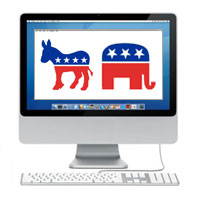Looking for more insights?
Sign up to stay informed about our latest article releases.
What is more important in the U.S. electoral campaign, the message or the image? Can a presidential candidate turn his name into a brand? The U.S. elections have become a case study in how to use marketing tools so that a politician’s image prevails over his message. Both John McCain, the Republican candidate, and Barack Obama, the Democrat, have brought out all of their heavy artillery when it comes to communications techniques aimed at the public. However, experts say that Obama’s campaign has been more innovative, relying on the creation of a brand image, not only in his race for the White House but also in his duel with Hillary Clinton in the primaries.

Sign up to stay informed about our latest article releases.